If you’re looking for a unique plant with purple leaves that very easy to care for, look no further than the Wandering Jew or Tradescantia zebrina plant! This popular houseplant has vibrant leaf colors, is easy to propagate and is a great choice for experts or beginners alike!
Before we get much further, we need to make note that the name Wandering Jew is a bit controversial and the alternate name for this plant is now Wandering Dude. It also goes by the name of Inch Plant, Silver Inch Plant, Spiderwort Plants and Flowering Inch Plant.
A Wandering Jew usually grows like a weed. In fact, it’s considered an invasive plant in many regions of the world when it’s grown outside as a ground covering.
They wander everywhere and are very easy to take care of, for the most part. They are such a beautiful plant and make such a striking addition to any houseplant collection and add a lot of beauty to every decor.
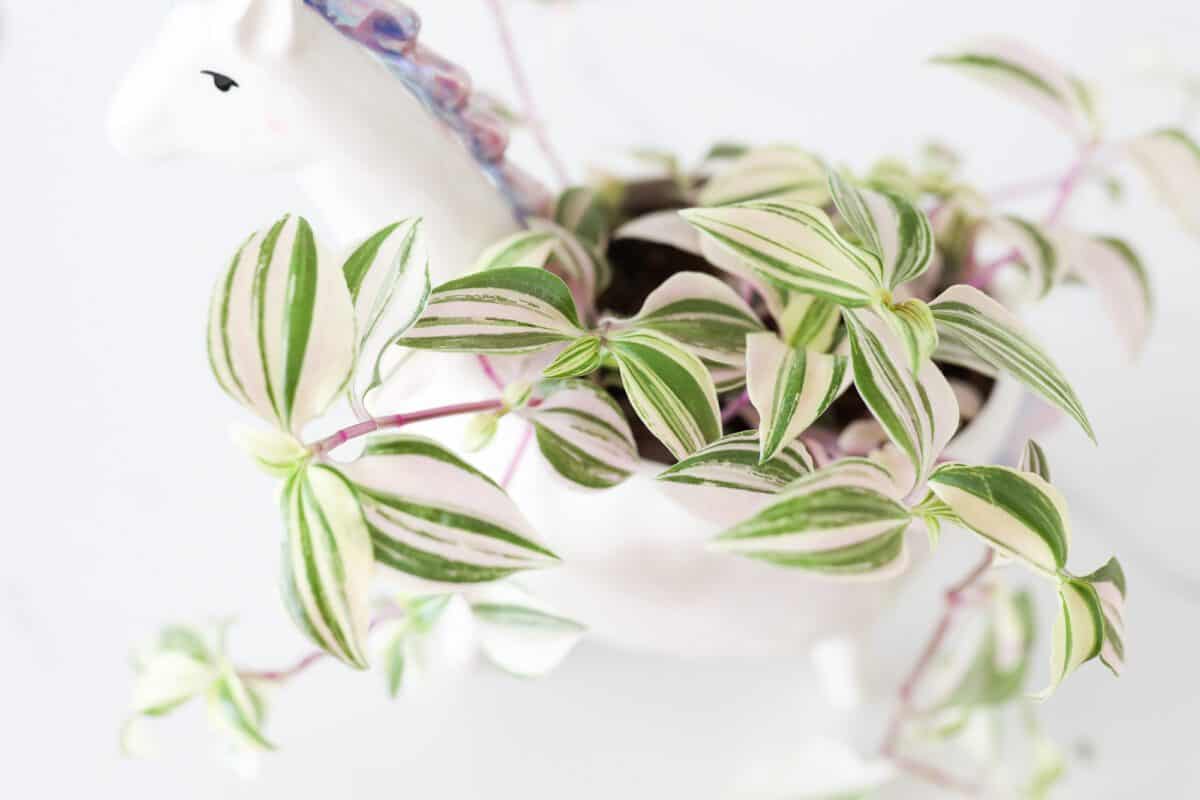
My first introduction to a Wandering Jew plant was “way back when” when I was a teenager and my sister and I bought one to grow in our bedroom. We hung it in a fancy macrame hanger and it grew like a weed.
We hung it in a north window at the old farmhouse we lived in. One time I counted and we had over 50 plants in our tiny bedroom! Little did we know back then that we were burgeoning plant ladies!
Since then, I have grown multiple Wandering Jews and have found them to be very easy to grow and care for. The most recent one I have was started from a few pieces of a plant that I found lying on the floor of a garden center last summer and brought home to root.
I have propagated many plants from those few pieces since then and want to share with you how easy they are to grow and care for.
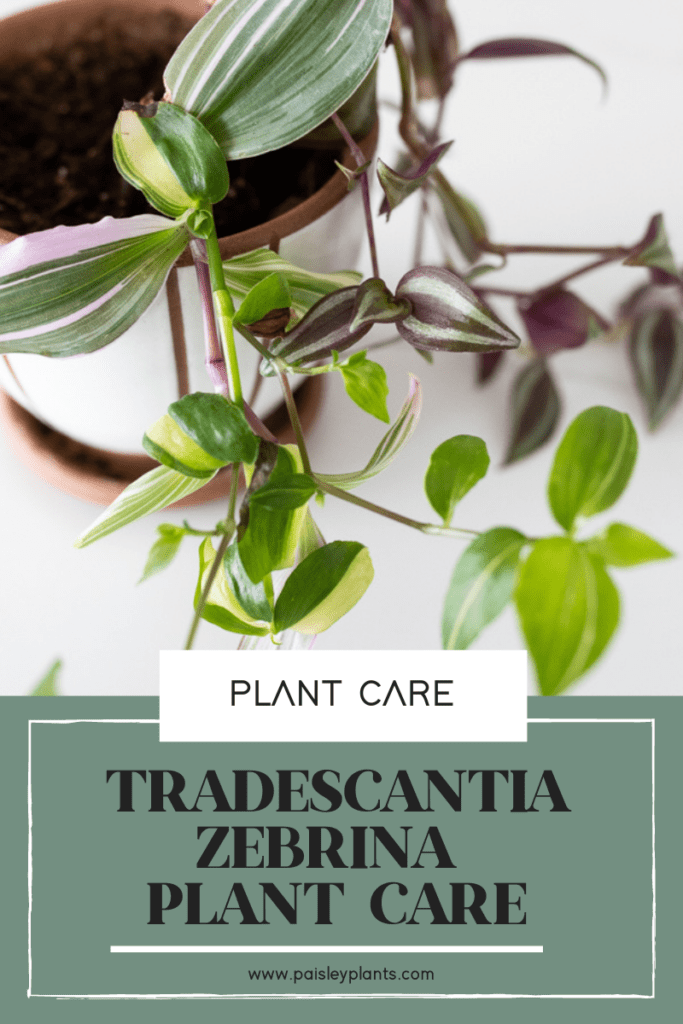
This post includes affiliate links.
Table of Contents
Wandering Jew History
The scientific name for the classic variety of the Wandering Jew is Tradescantia zebrina. The common name refers to the whole family that falls under the scientific name of Tradescantia.
Tradescantia plants all require similar care and are easy to grow. They are native to Mexico, but are grown both as indoor and outdoor plants in many places.
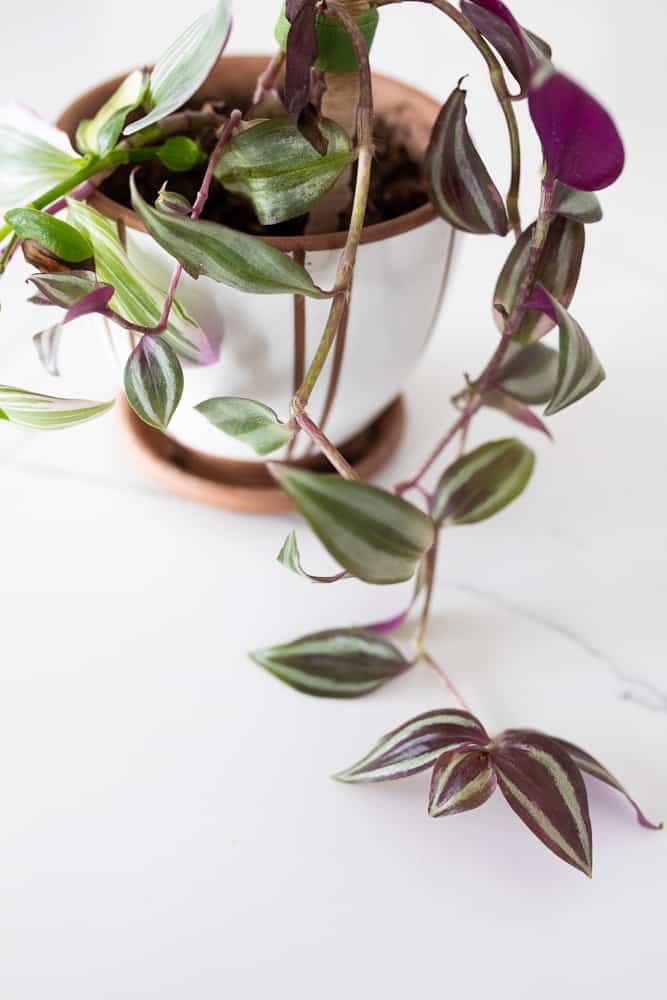
It is also called an Inch Plant. The distance between the leaf nodes on the stem are about one inch apart, thus the name Inch Plant. There are also multiple other varieties of a Wandering Jew plant, but we’ll share those in another post!
Some people like to grow their Wandering Jews in a hanging pot, but others like to have them in a pot sitting on a stand or side table. Either way is fine, depending on how you want the plant to look. Some plants have long, trailing vines and others are very full and bushy.
Basically, a Wandering Jew is a potful of cuttings. If you want a fuller plant, you should opt for pinching back the longer vines and either sticking them back into the dirt or letting them grow roots in a glass of water or propagation station first. Either way will work, but it is up to you how you wish to do this and how you want your plant to look.
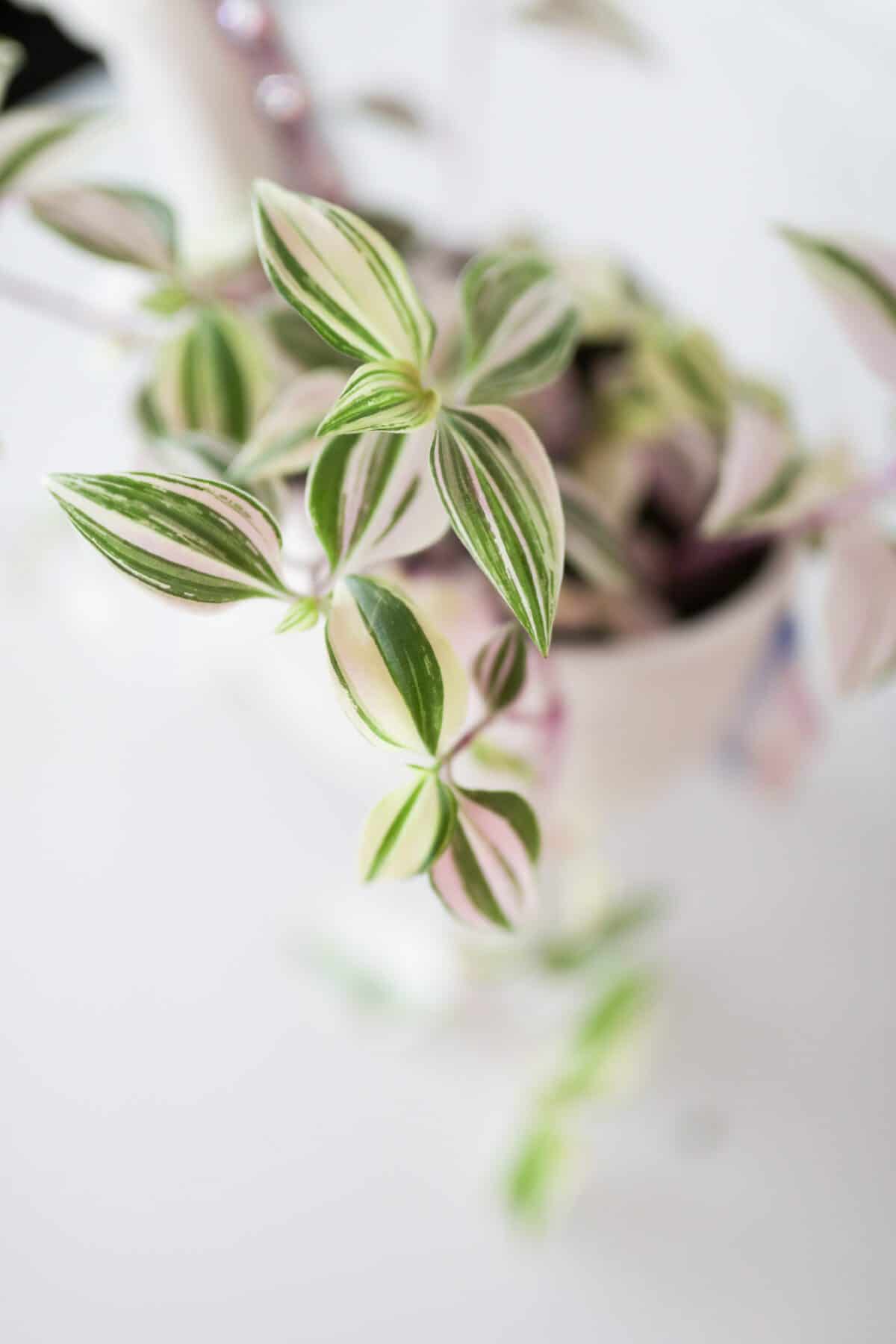
If you want a plant that has longer vines, you can let it grow, but the top part of the plant may start to die off if you let it go for too long without adding new cuttings to the top of the plant again.
You can think of your Wandering Jew like an ivy – as many, many plants, not just one single plant. It needs to be constantly renewed (as it naturally is in the wild) so you need to do this by pinching off and replanting the cuttings.
Did you know that in the wild, every single stem will put down roots where it touches the soil and forms a new plant? That’s amazing, isn’t it? They grow horizontally in the wild, so wherever they touch the soil, they will grow!
Also, Wandering Jews will root pretty much anywhere – in water, in vermiculite, perlite, multipurpose soil, multipurpose compost, anywhere!
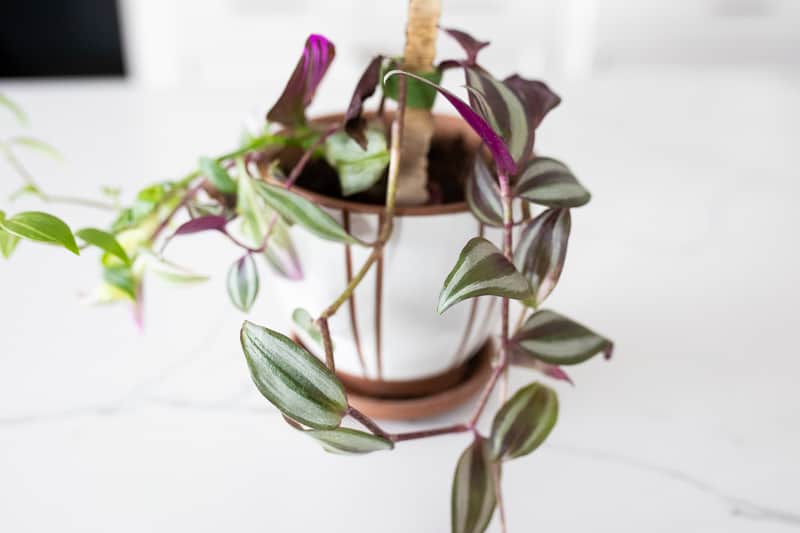
Toxicity
While ingesting a Wandering Jew is not suggested for animals or humans, it is generally known that the sap from the plant can be a known irritant to the skin of both animals and humans or to the throat lining, if swallowed.
So, just be sure to use caution when placing these plants around young children or pets to avoid any issues.
Wandering Jew Plant Care
With proper care, your Tradescantia zebrina will be a happy, thriving plant for years to come. Here’s what you need to know!
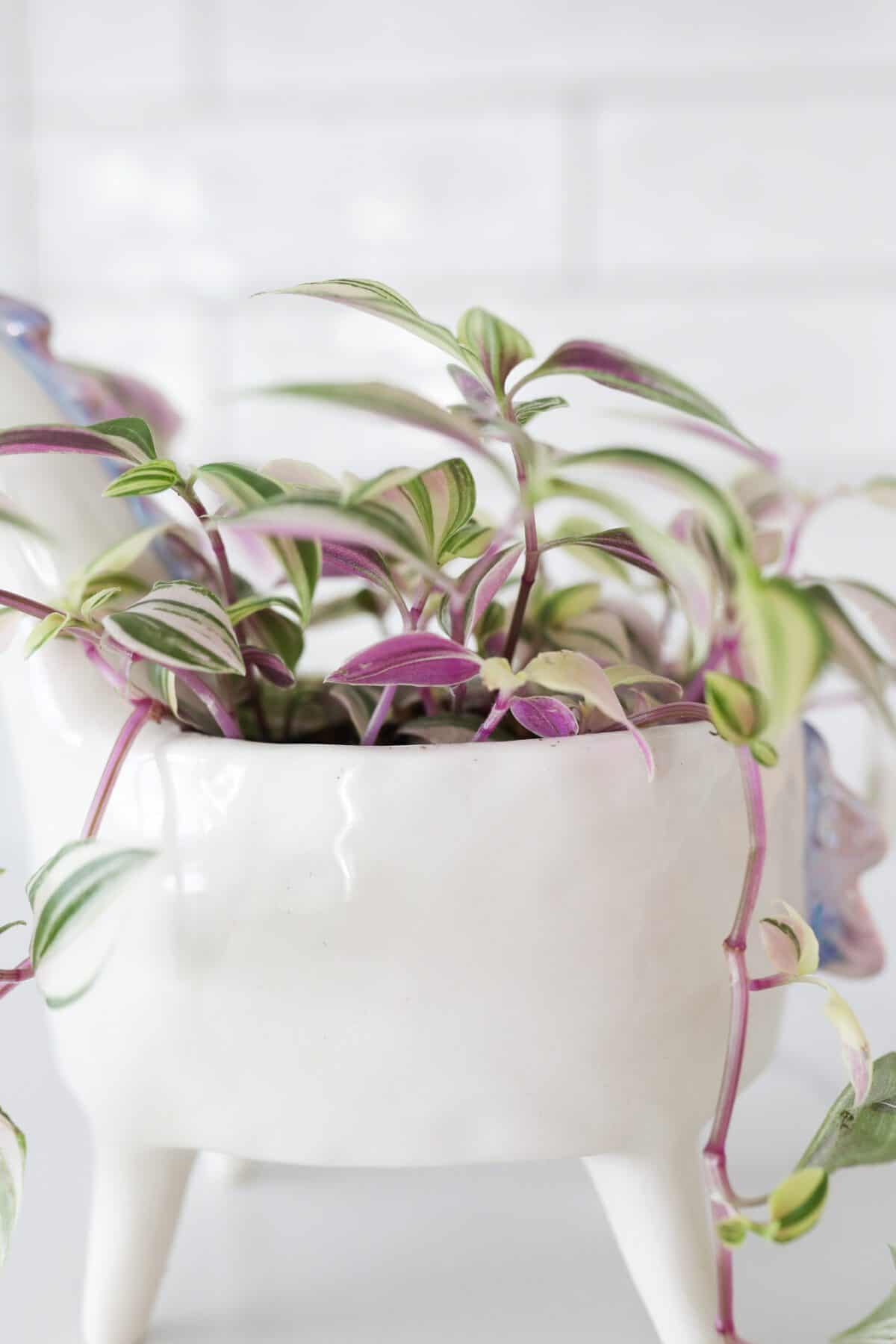
Water
The Wandering Jew is a happy plant when it is watered enough, but not allowed to dry out too much. In general it likes moist soil. Most of the time, I water mine about once a week.
It likes a good drink of water, but I don’t let it sit in the water for extended periods of time. Be sure there are drainage holes on the bottom of the pot and your plant should be just fine with this schedule. This plant is suseptible to root rot from overwatering it so allowing the excess water to get out is important.
Light
Wandering Jews like a good amount of bright indirect light. More light will make the leaves of the plant more purple or red while partial shade or not enough light will allow the leaves to be darker green.
I keep my plant in a west window that gets indirect sunlight for about six to eight hours per day. It does get a lot of sunlight especially in the afternoons and seems to really flourish with that.
I also put my Wandering Jew plants outdoors on my deck for the summer months. Once it stays above 50 degrees overnight, I keep them outside for good. They do phenomenal when they are on my deck all summer.
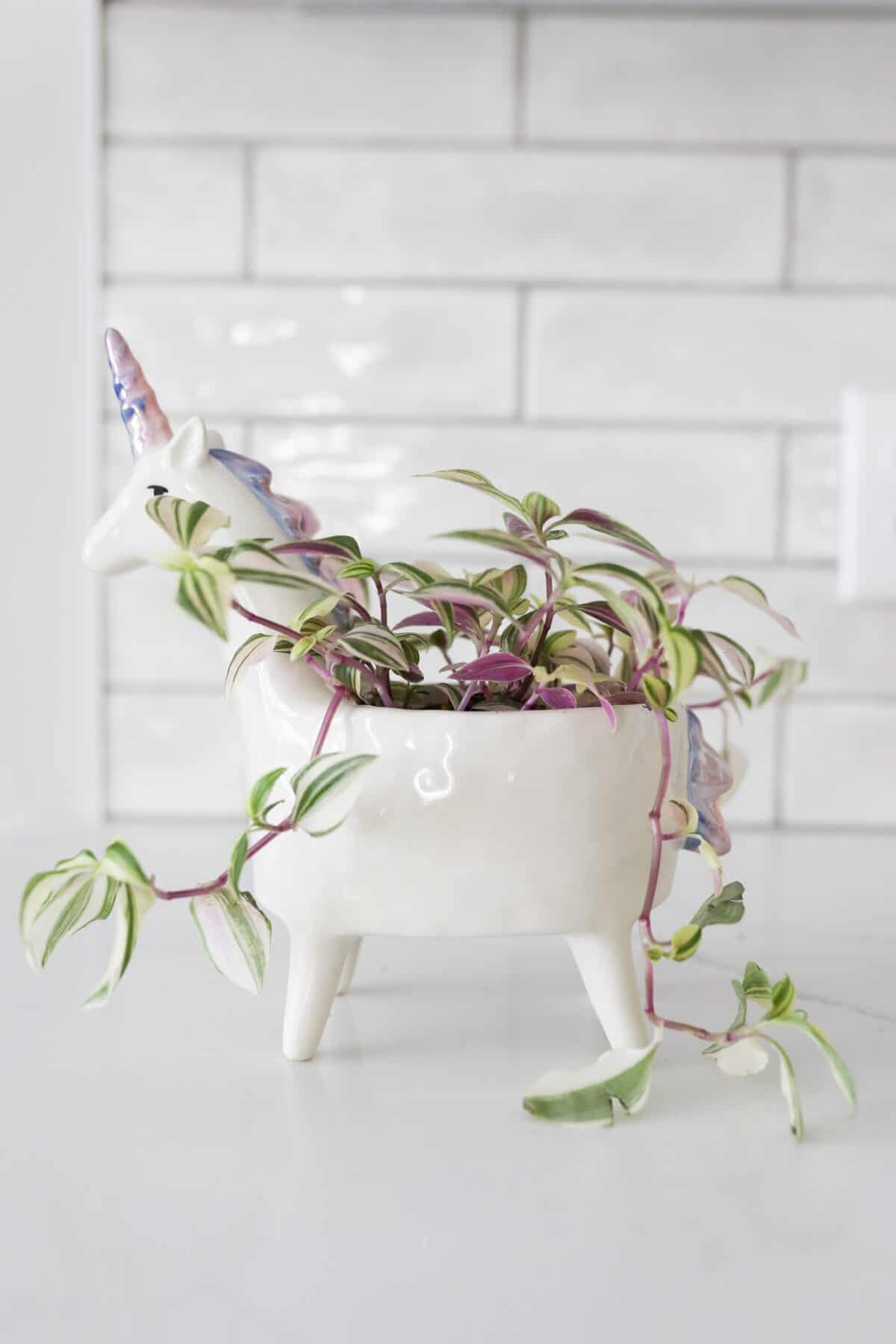
Soil
You can use any regular potting mix for these plants. Ideally a well-drained soil is great but I use regular potting soil for my Wandering Jews. They do well and I don’t do anything special for them.
Maybe once in a while I fertilize them with a multipurpose liquid fertilizer, but most of the time, I just let nature take its course.
Fertilizer
As I mentioned above, I generally don’t fertilize my Wandering Jews. They are very hardy without being fertilized, but can be if you wish to do so.
Use a water-soluble fertilizer and remember to stop fertilizing your plant in the winter months while they’re dormant. You can start up again in early to late spring with their growing season begins.
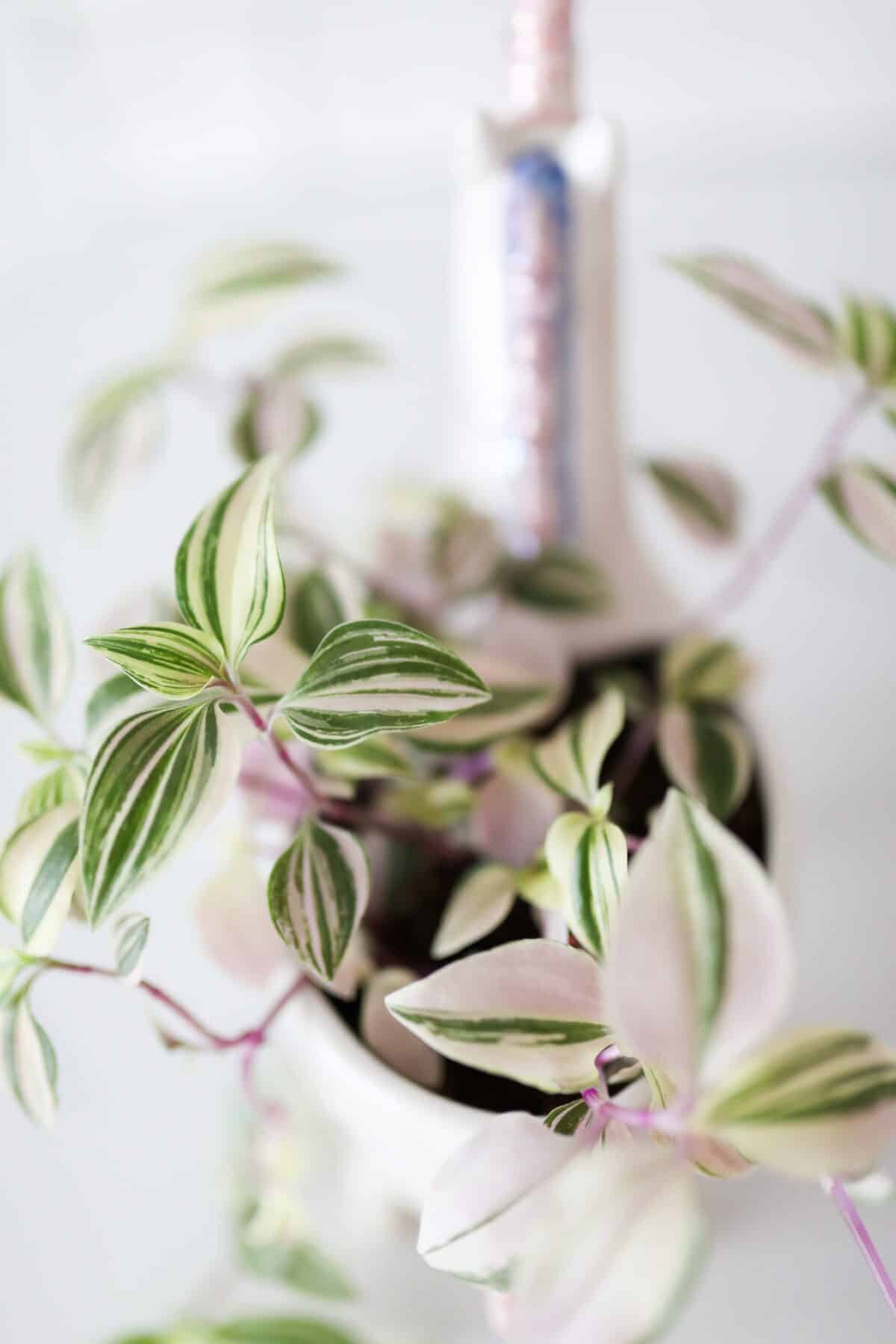
Temperature and Humidity
They are naturally tropical plants that are native to Mexico, so they do like warmer temperatures and high humidity.
I don’t do anything special with these, other than putting them outside to enjoy the warmer summer months. They do thrive during this time of year. They love the humidity and the rain that comes during our beautiful northwest Wisconsin summers. I almost hate to have to bring them inside when the time comes!
Pest and Diseases
Bugs aren’t usually a problem when growing Wandering Jews outdoors. You may have spider mites, aphids, or fungus gnats when growing them indoors, but this can be treated with neem oil. This can be purchased at any garden center or online. Follow the package directions for use.
I have never had an issue with any pests to date with my Wandering Jews, so just keep a close eye on your plants to be sure there aren’t any problems. If you find any, be sure to deal with them quickly so they don’t become a problem!
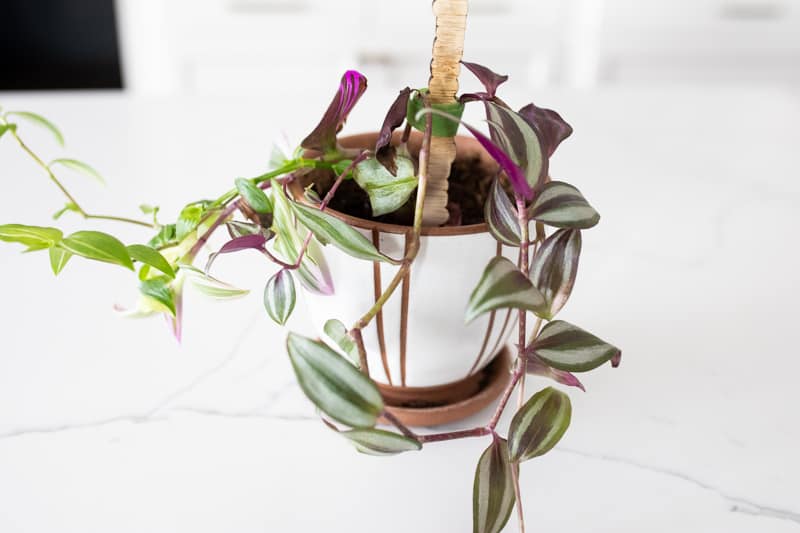
Pruning, Repotting and Propagating
These indoor plants have a tendency to grow very quickly. They like to wander, as their name indicates. Once they find the ideal conditions to grow in, they will usually flourish. Keeping the ends of the stems trimmed back will help you have a bushier plant.
It’s a good idea to cut stem cuttings on a regular basis. When you regularly take off the ends portions of the stems, the plant will great new growth and bush out, becoming a nicer looking plant.
You can pinch off the stems at the joints or nodes just below the leaves. This is a natural point where you can remove them and is an easy way to figure out where to remove them from the stem.
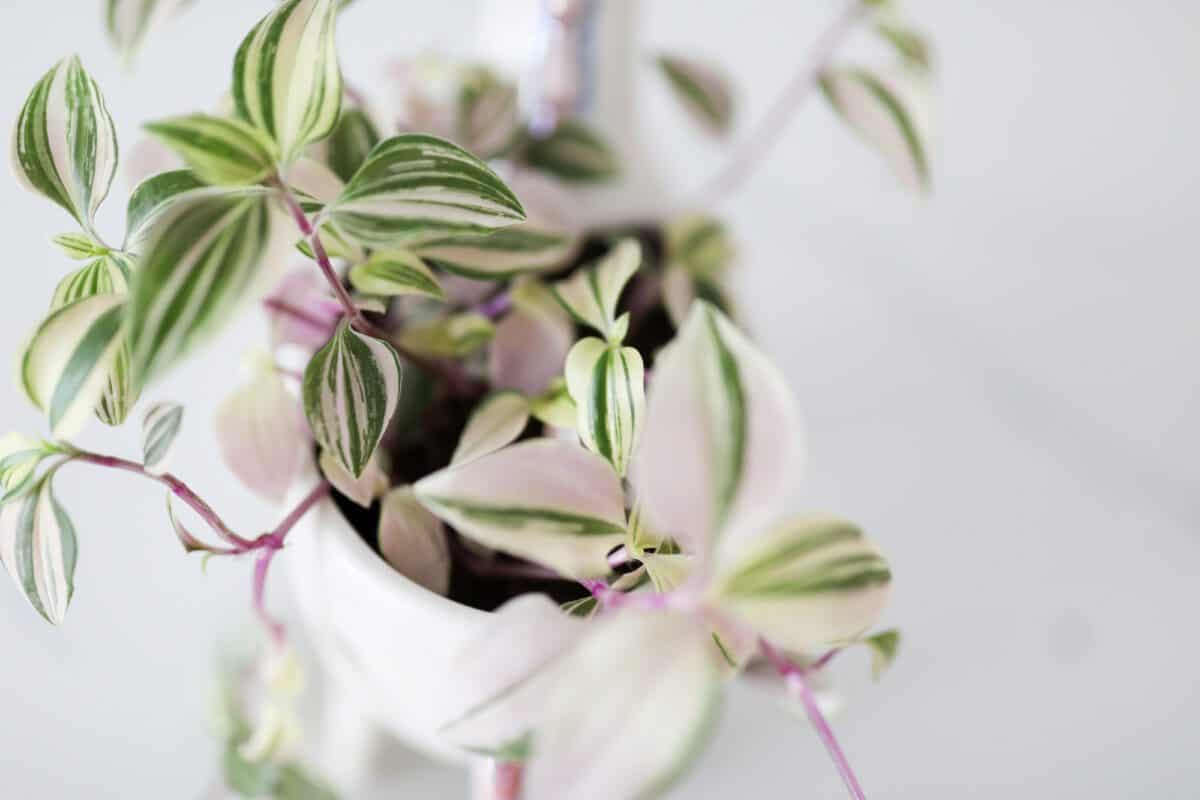
Always remove at least four to five inches of stem to ensure you get a good start on the new part of it. If there are too many leaves at the bottom of the stem, remove them to allow the roots to grow properly.
Take a close look at the stem and you will see that there are tiny roots growing from the leaf node on the stem right at the joints. These are the easiest plants to grow from stems since there is this natural root growth from the stems as they grow. This is where in the wild, (as I mentioned above), the plant will take root in soil anywhere it touches the ground.
Place your cuttings in water to root them and they will usually grow pretty quickly, in as short of a time as a few days. Also, you can just place the cuttings right into the soil of your current plant.
Some people like to just keep putting the cuttings back into the soil at the top of their plant to make it a thicker, more bushy plant. Some people swear by this method, however, I usually do root mine in water first.
Head to this post for even more details on how to propagate your wandering jew!
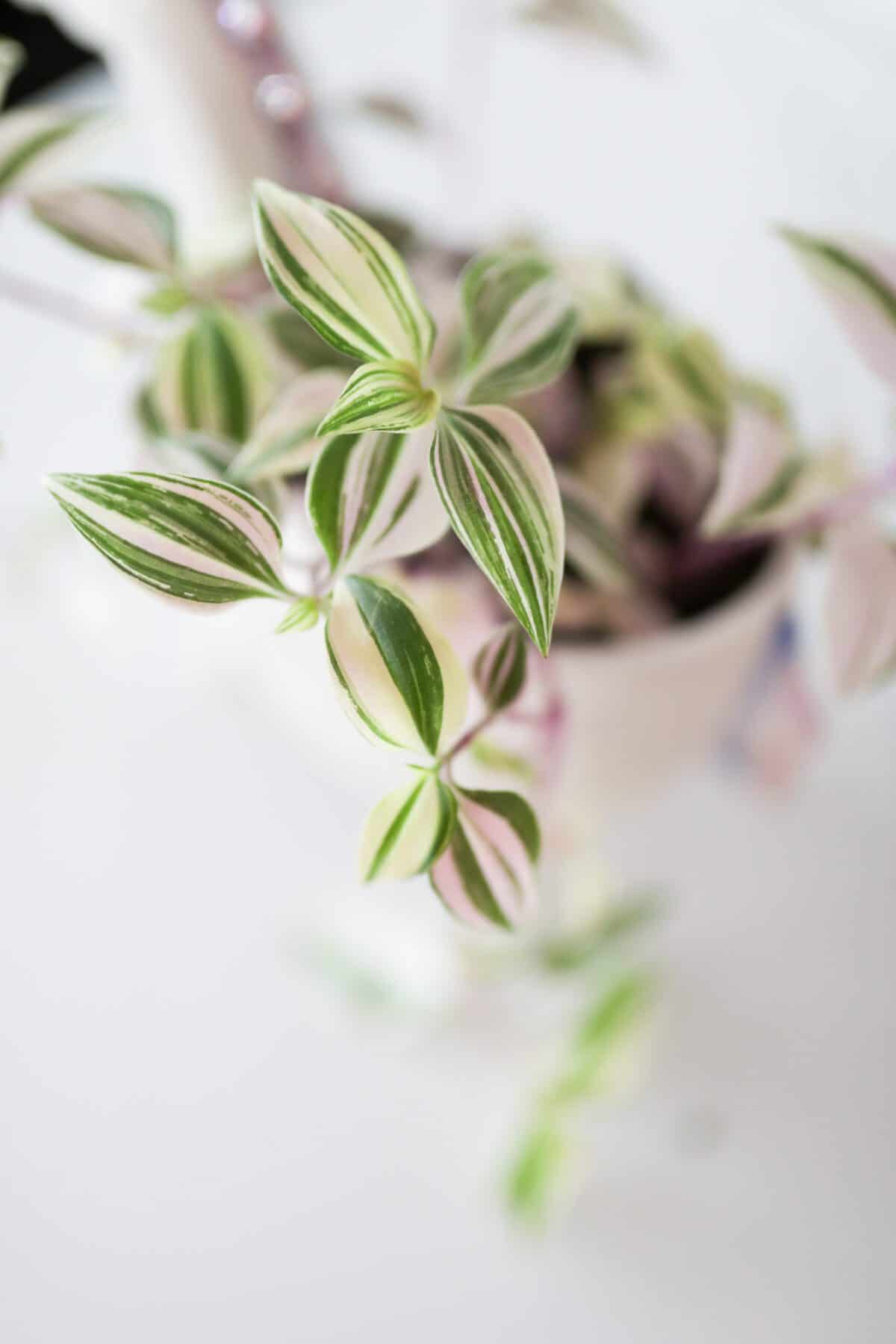
Once you have some roots (and they don’t even have to be very long – maybe an inch), place the cuttings into some fresh soil and voila! You have another beautiful plant to add to your plant collection!
Where to Buy a Wandering Jew
- Local Nursery
- Amazon
- Etsy
- You can also, of course, find a friend who has one and ask them for some cuttings from their plant and start your own! That will give you some experience in growing them and see how you do with it!
FAQ
The top leaves of your plant will die off naturally, so don’t be alarmed at this. You can pinch or cut off the stem and replant the leaves that are still green below the dead ones once they root.
This will depend on how much care you give your plant. Some of them will live for years. If you take good care of it (watering, pruning, good light, etc.), it should be a plant you can keep for years to come.
In Conclusion
This will probably be one of the easiest plants to grow that you will ever have. Maybe for the first time you try growing one, if you are able to get some cuttings from a friend or neighbor, that would be the way to go.
If not, just buy one. They aren’t usually too expensive to buy and they are generally a pretty easy plant to care for. They will prove their love to wander and you will have a gorgeous addition to your houseplant collection!
